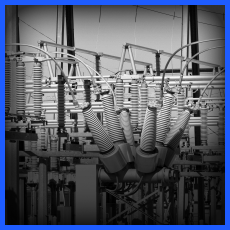OVERVIEW
There are few pieces of infrastructure that are more critical to the economy and daily life than the electric grid. However, it is surprisingly difficult to gather real-time information on its operations and control the flow of electricity.1 That’s because the Information Technology revolution has largely skipped over the electrical grid, leaving it inefficient and vulnerable to power interruptions. Utilities have done a remarkably good job providing reliable power over the grid, considering that it still relies heavily on 1960s-era technology.2 But a modernized grid could greatly improve America’s electricity system, making it more reliable, clean,3 and efficient.4
ANALYSIS
The technologies involved in modernizing the grid, generally referred to as “smart grid”, add new information gathering and control mechanisms to all parts of the electricity system, from generation all the way down to consumer appliances. Depending on the goals of a state or utility, smart grid infrastructure may range from smart meters to remote fault detection5 to smart appliances that can be scheduled for off-peak demand hours. As utilities are beginning to invest in smart grid infrastructure, it is critical to make efficiency a priority in order to maximize the benefits to consumers and the environment from those investments.
One of the key advantages of smart grid is its ability to increase energy efficiency. Instead of requiring consumers to change their behaviors to reduce energy use, smart grid delivers the same services that customers are used to, but does it much more efficiently. And if consumers want to take additional steps to lower their bills, smart grid can help them identify ways to reduce waste, like turning off lights or the air conditioner while not at home. Another potential capability of smart grid technology is demand response, which allows consumers to choose when to operate appliances based on real-time price. In the future, it may be used to help consumers shift their energy consumption to the times when electricity is cheapest and provided by the generation cleanest sources, such as during peak wind times.6
Some utilities have begun to invest in smart grid technologies in order to complete repairs more quickly, make the grid more robust and fault resistant, and lower maintenance and operation costs.7 There are many utilities that, in cooperation with state public utility commissions (PUCs), are making great strides toward efficiency.8 However, without support from PUCs, utilities do not engage in efficiency-boosting programs, because they lower customers’ utility bills and undermine profits.9 Some states have recognized the importance of efficiency and have implemented programs to compensate utilities for revenue losses when they adopt efficiency programs, but many have not.10 Without action, it will be inefficient business-as-usual for utilities in these states.
IMPLEMENTATION
To overcome obstacles and encourage smart grid infrastructure deployment by utilities, government could take several actions to increase grid resilience and encourage efficiency.






